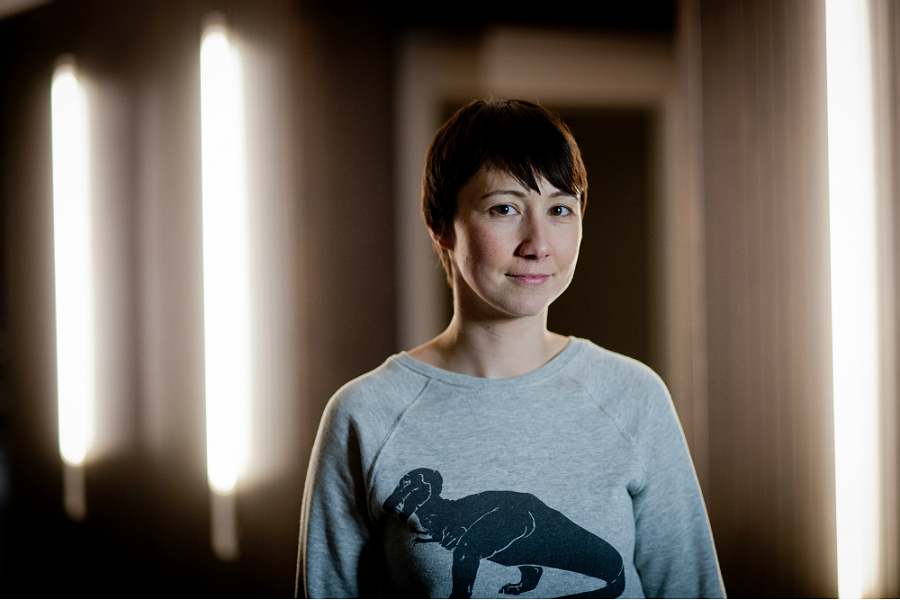The Big Interview: Karen Newman

Sarah Creed caught up with Karen Newman, curator at the newly relocated Open Eye Gallery, to talk about the highly anticipated next exhibition, Infra…
The Double Negative: You have been the curator of Open Eye since October 2010 and within a year had a move into a brand new gallery space, and helped to relaunch the gallery with a new series of exhibitions. Is it fair to say the past twelve months have been slightly more hectic than normal?
Karen Newman: Hectic but really exciting too, it’s great to see the new programme come to life.
TDN: Having previously been the curator at FACT (Foundation for Art and Creative Technology), which is widely known as a media art centre, and now working at Open Eye, is lens-based media where your artistic passion lies?
KN: Lens-based media is massively important for our understanding of the world today. As a society we take, distribute and consume more photographs than ever before, at a phenomenal rate. Flickr claims to have uploaded over 6 billion photos, with thousands of new images added every minute. This far surpasses the limits of human perception and memory. There are actual physiological changes happening to human brains as a result of this increasingly visual culture –this is really fascinating to me. How artists and photographers make work right now in this context intrigues me.
TDN: Your next main exhibition, Infra by Richard Mosse, broaches a highly topical and controversial topic of conflict in the Democratic Republic of Congo. What was your reasoning behind bringing Mosse’s work to Open Eye, especially after your current, light-hearted exhibition, Richard & Famous?
KN: We’ve tried to strike a balance with different types of photography that will appeal to different kinds of audiences in our first year. Part of this thinking is to do with engaging different debates around photography – so presenting artists and photographers who challenge and subvert traditional genres; who turn the straight documentary approach on its head. The programme may feel particularly challenging or entertaining at certain times, but more than anything I hope it will make people stop and question how we engage with photography today.
TDN: Both the main and archive exhibitions set to open in March have very similar, evocative inspiration, based within the complex atrocities of war and its legacy. When curating a project of such deep meaning and emotion, how do you strike the balance between implying the artist’s message, whilst not overbearing the public with negative imagery?
KN: It’s about making a selection of work that leaves the viewer space to form their own opinions. I think with both Simon Norfolk’s For Most of It I Have No Words and Richard Mosse’s Infra the most powerful images are those where the violence is kept off camera. A staircase worn away by thousands of footsteps at Auschwitz; or an impossibly beautiful landscape where any evidence of atrocity is cloaked in a camouflage of bright pink.
TDN: The next exhibition launch not only sees the interior of Open Eye Gallery changing its content, but also the exterior. What brought about the idea of exhibiting artwork on the facade of the building?
KN: It’s a huge white wall which in itself is a great opportunity for artists to experiment with, but it’s also the membrane between the public space and history that surrounds Mann Island, and the programme inside the gallery.
TDN: It is obviously a very specific commission to make for wall-work, one that is a unique feature for Open Eye in Liverpool. How do you go about selecting artists, and what was it about Emily Speed that made you so keen to work with her?
KN: Both S Mark Gubb and Emily Speed were selected on the strength of their previous projects exploring public space and architecture. Emily’s work is often intimate, subtle, playful even – always engaging. As a sculptor she responded to the materiality of the Corian (a type of high grade plastic), that clads the wall. She is from Liverpool and previously made an artist’s book Lost at Sea which investigated historical buildings that were left behind amidst new regeneration. This included the most recent development along the Waterfront – including the exact spot where Mann Island now stands. Emily is interested in the newness of the new gallery, the idea of permanence and decay. Nothing is finished, Nothing is perfect, Nothing lasts turns the gallery façade into a gigantic piece of paper, peeling back to reveal a layer underneath. In many ways her work is a stark contrast to Mosse and Norfolk’s, but what links them is this idea of what can’t be seen – what lies beneath the surface.
Sarah Creed
Photo courtesy Mark McNulty
Richard Mosse’s Infra & Simon Norfolk’s For Most of it I Have No Words opens on March 30th 2012. The photographic exhibition will be complimented by the gallery’s new exterior wall work by sculptural artist Emily Speed.





